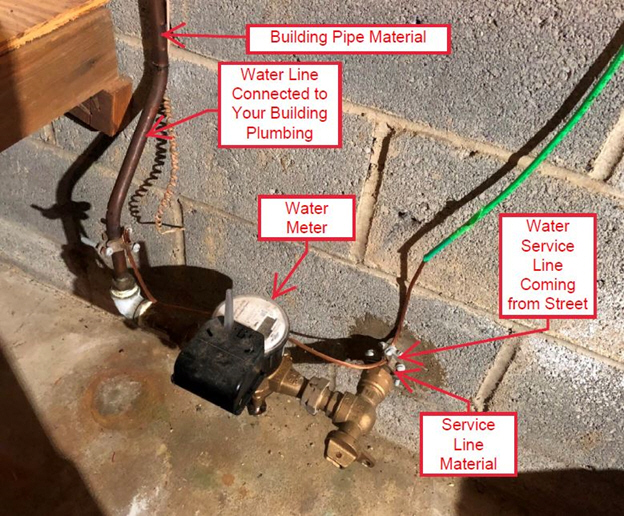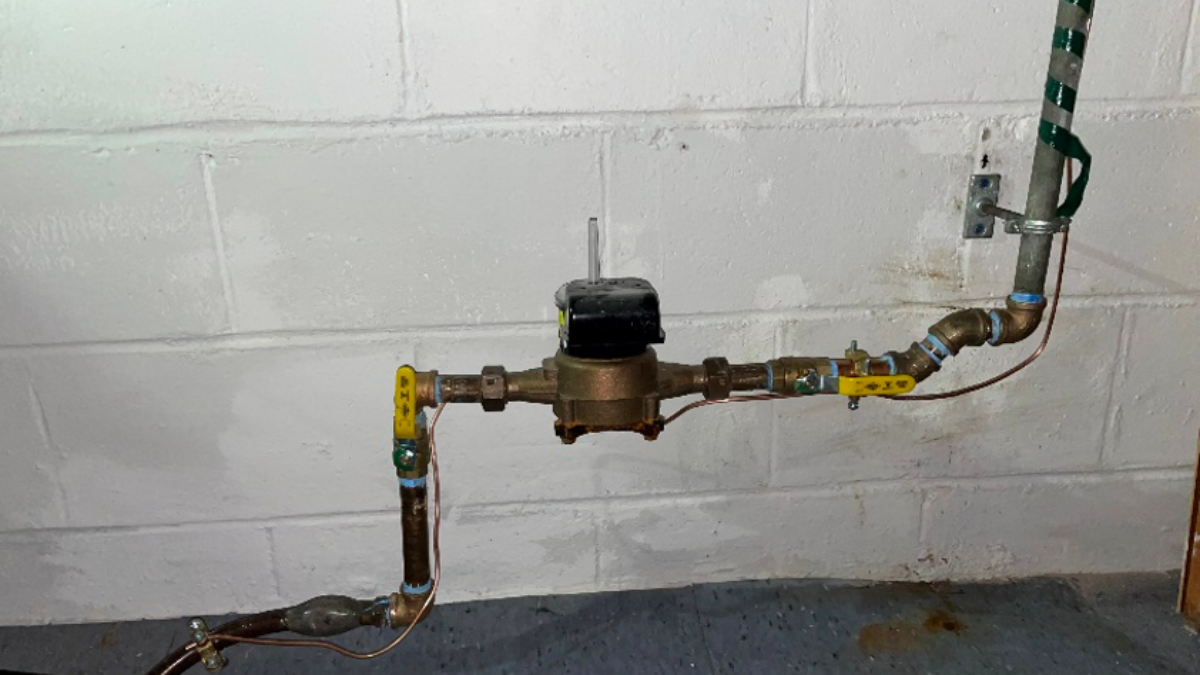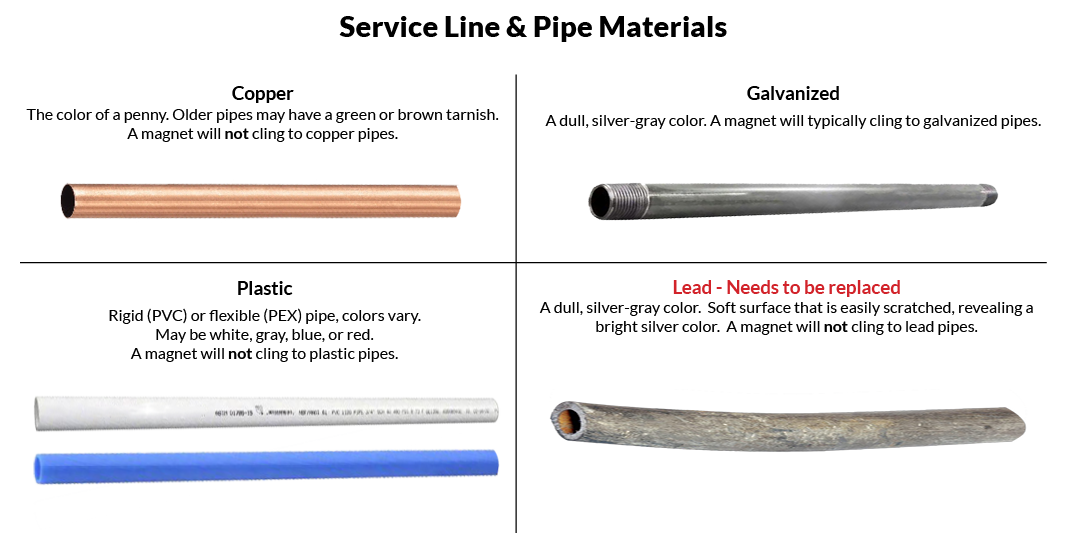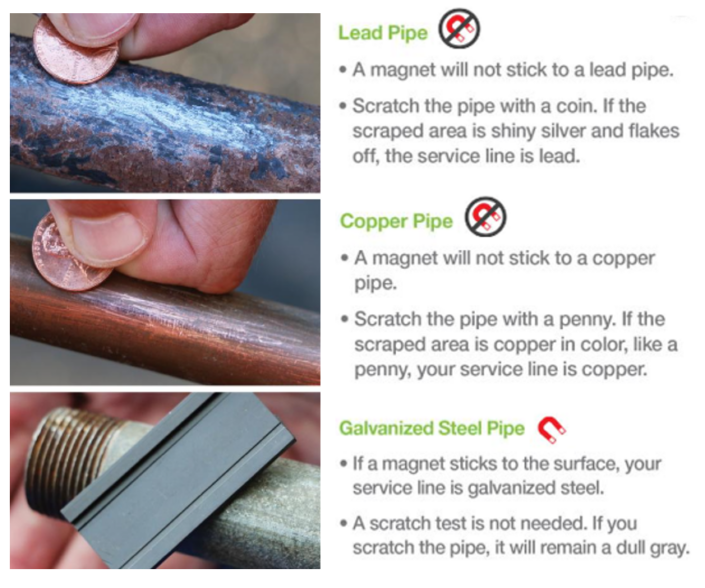
 |
| Identify Your Water Line Material for a Safer Community | ||||
The Borough of Pottstown is conducting an initiative to identify the material of water lines in the area. Property owners can assist by completing a simple questionnaire that involves three easy steps online.
|
||||
1) Locating Your Water Line Not all homes have the same construction; some have basements, while others are built on a slab without basements. Start by locating the curb stop, a shut - off valve typically buried near the curb in front of your home. It usually has a lid on it, as shown in the picture below. Draw an imaginary strait line from the curb stop to the front of your home to approximate where your service line enters the house. |
||||
|
||||
Next go inside your home and locate the water line. Look for the water meter, as the pipe connected to it is the one to identify. In most cases, this pipe will be visible coming out of the wall in the basement or the floor in homes with slabs. If your home lacks a basement, the meter might be in a closet or under the kitchen counter. |
||||
 |
||||
 |
||||
Note: if you live in a home that does not have a basement this meter may be in a closet or under the kitchen counter. |
||||
2) Identifying The Pipe Material Now that you have found where your service line enters the home, we need to have you identify the material that it is made of. Below are pictures of different types of pipe materials. |
||||
 |
||||
| Starting left to right is: | ||||
| Copper: This pipe will be the color of a penny if scratched. | ||||
| Galvanized: A Dull silver-gray color. A magnet will typically cling to galvanized pipe. | ||||
| Plastic: Usually white or blue and is attached with a clamp. Colors vary. | ||||
| Lead: A dull silver-gray color easily scratched soft material. Strong magnets will not cling. | ||||
 |
||||
| Reporting Your Findings | ||||
Instructions: Please fill in your name, address, date and check the button next to the type of material your service line is made of. |
||||